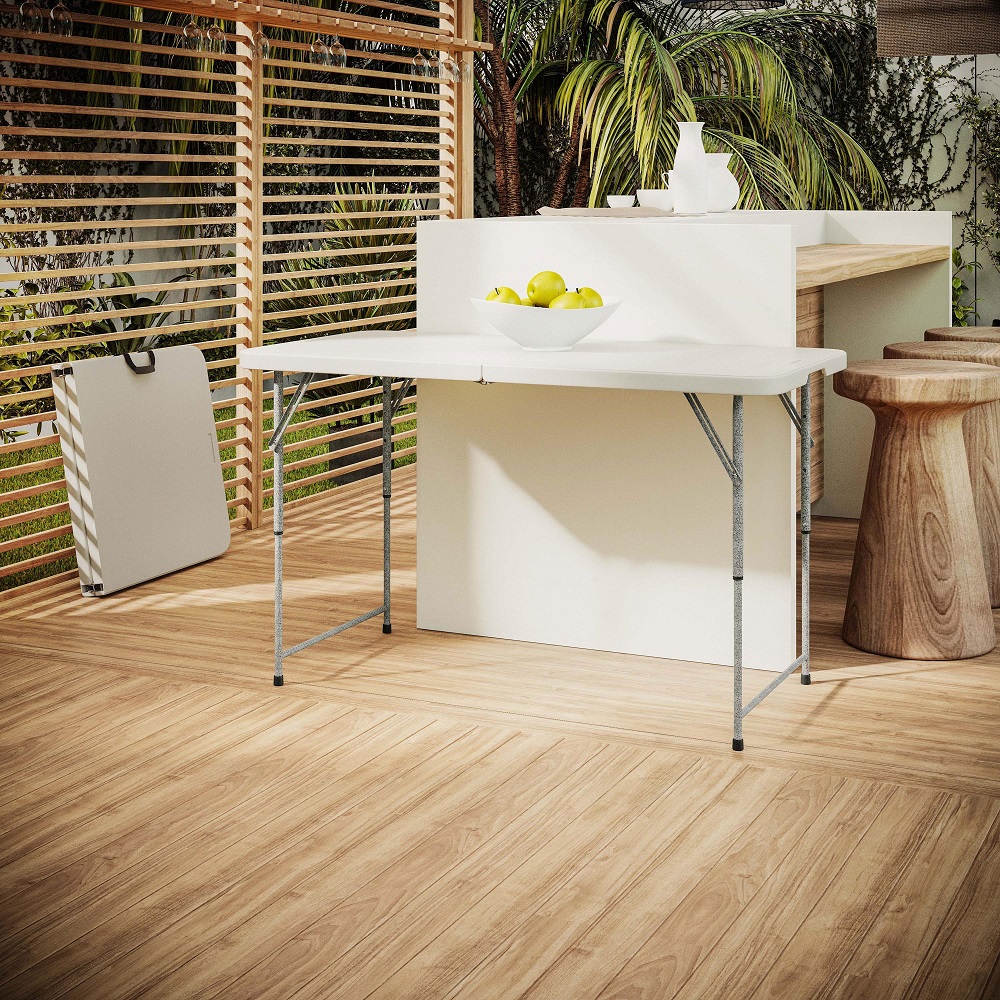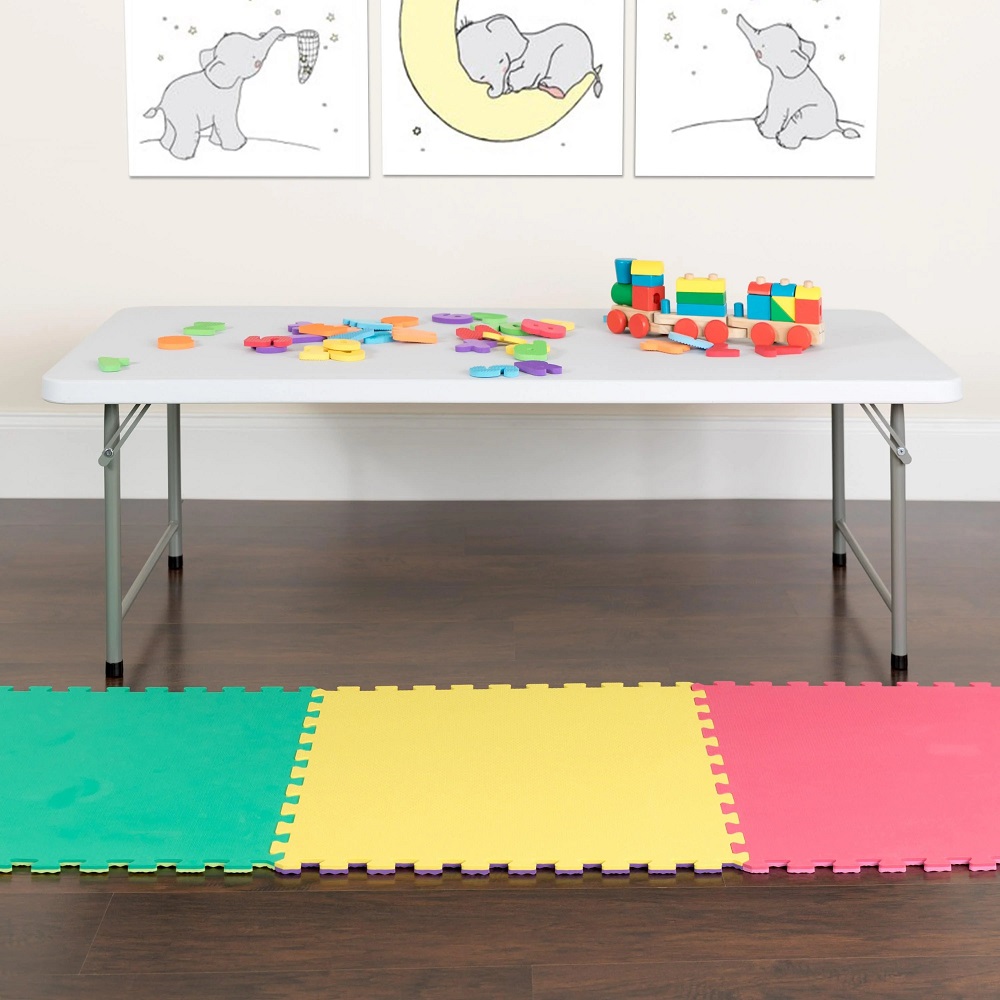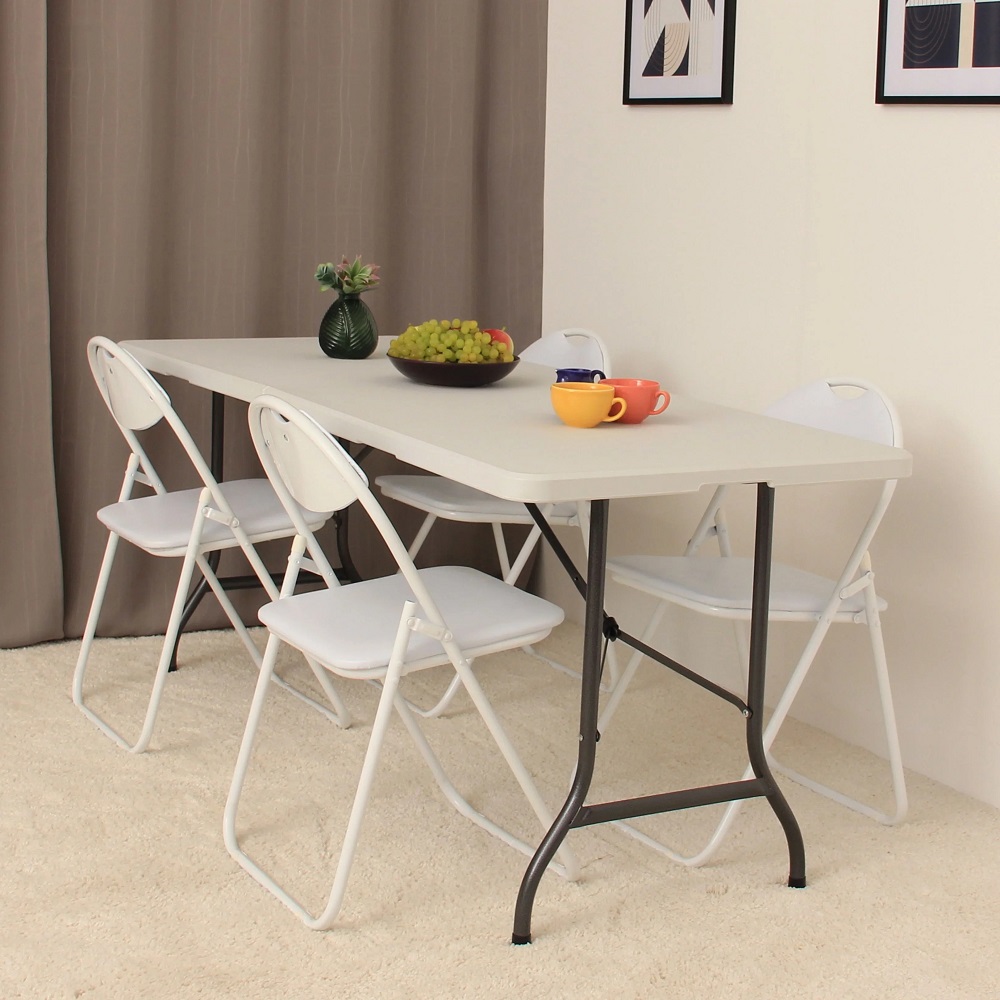Introduction to Folding Tables in Modern Spaces
Folding tables are a staple in both home and professional settings. They offer versatility and flexibility that traditional tables can’t match. As space becomes a premium, folding tables address this issue with their ability to fold away when not in use. From personal use in small apartments to large events like conferences, they fit into various scenarios. They are lightweight, easy to transport, and quick to set up. Most importantly, selecting the right standard folding table size enhances functionality and comfort. Folding tables support sustainability by being reusable for different purposes. In modern spaces, where design and efficiency are vital, they blend in seamlessly. They come in various shapes and sizes to serve distinct needs. Getting the standard folding table size right ensures optimal use of space. It makes sure that the folding table serves its purpose to the fullest. In this blog, we will explore how to select the right folding table size for your needs.
Importance of Selecting the Correct Table Size
Selecting the right standard folding table size is crucial for several reasons. Here are the key points to consider:
- Maximizes Space Efficiency: The right table size ensures that space is used optimally. It leaves enough room for movement and other furniture.
- Enhances Comfort: A table that’s too large or too small can be uncomfortable for users. Correct size means better ergonomics.
- Improves Functionality: The correct table size allows for the intended number of users. It makes tasks easier to perform.
- Aesthetic Cohesion: The right-sized table complements the room’s design. It does not overpower or diminish the overall aesthetics.
- Adapts to Multiple Uses: A properly sized folding table can adapt to various functions, from dining to meetings.
- Safe and Stable: Correctly sized tables are more stable. This reduces the risk of accidents or spills.
Choosing the right standard folding table size is not just about fitting it into a room. It is about enhancing the experience of those who use it. It means creating a balanced environment that combines practicality with design. For those who will use the folding table in 2025 and beyond, remember these points. They’ll help ensure that you make a smart investment for your space.

Common Folding Table Size Categories
Understanding the common standard folding table size categories is essential when choosing the best option for your space. Here are the most popular sizes you’ll find in 2025:
- Personal Tables: These tables are typically around 18 to 30 inches wide and cater to individual use. Ideal for small, confined spaces such as studio apartments or solo workspaces.
- Banquet Tables: Usually 30 inches in width, these tables can range from 60 to 96 inches in length. They suit large gatherings and are perfect for events like weddings or conferences.
- Conference Tables: Designed for meetings and professional environments, conference tables are generally 18 to 24 inches wide and can stretch up to 96 inches in length. They facilitate group collaboration and discussions.
- Dining Tables: For a comfortable dining experience, these tables are often 36 inches wide. Length may vary, but they typically provide enough space for family meals and small dinner parties.
- Training Tables: These are narrow, ranging from 18 to 24 inches, and cater to educational settings or business training events. They provide workspace for attendees while optimizing room space.
Choosing from these standard folding table size categories requires consideration of the intended use and the available space. Each category serves a distinct purpose and provides specific benefits to its users. By deciding on the right category, you lay the groundwork for a more informed choice regarding the exact size your situation requires.
Factors to Consider When Choosing a Folding Table
Selecting the ideal standard folding table size involves several factors. Think about these elements to make the best choice:
- Space Available: Measure the area you plan to use the table in. Ensure enough room for movement around it.
- Number of Users: Consider how many people will use the table. This impacts the length and width needed.
- Purpose of Use: Identify the table’s primary function. This determines the shape and sturdiness required.
- Storage Limitations: Check your storage space. The folding table should fit easily when not in use.
- Portability: If you’ll move the table often, pick a lightweight option. It should also be easy to fold.
- Material and Durability: Choose materials that suit your needs and last long. Think about indoor or outdoor use.
- Budget: Know how much you can spend. Higher quality often equals higher cost, but look for value.
- Ease of Setup: Select a table that sets up quickly and easily. It saves time and hassle during events.
Keeping these factors in mind will guide you to the right standard folding table size. You’ll find one that fits perfectly into your life and space.
Standard Folding Table Sizes and Their Uses
With several standard folding table size options available, it’s crucial to understand their typical uses to make an informed decision. Below are the common sizes and their primary applications:
- Personal Folding Tables: Around 18 to 30 inches wide, these tables are perfect for individual tasks. Think crafting, writing, or as makeshift desks.
- Banquet Folding Tables: With a standard width of 30 inches and lengths varying from 60 to 96 inches, banquet tables fit well in large gatherings and public venues.
- Conference Folding Tables: Typically 18 to 24 inches wide, extending up to 96 inches in length, conference tables are ideal for businesses and organizations.
- Dining Folding Tables: At about 36 inches wide, these tables provide a cozy space for family meals or intimate dinner parties.
- Training Folding Tables: Ranging from 18 to 24 inches in width, these tables are made for educational environments and can support laptops and textbooks.
Each size is designed with specific settings in mind, enhancing the functionality of the space it occupies. As you align your choice with your needs, you’ll ensure your folding table is not only a fit in dimensions but also in purpose.

Innovations in Folding Table Design for 2025
The year 2025 brings exciting innovations to standard folding table sizes and designs. These advancements make tables more adaptable and user-friendly. Let’s dive into the latest trends that enhance practicality and appeal for every setting:
- Advanced Materials: The future of folding tables lies in new materials that are lighter yet more durable. They stand up to the rigors of frequent use and are easier to move.
- Integrated Technology: Some tables now feature built-in charging ports and connectivity options. Users stay powered up and connected during use, perfect for the tech-savvy generation.
- Customizability: Modern folding tables offer more options for customization. Users can select from a range of colors, finishes, and sizes to fit their specific needs.
- Space-Saving Features: Designers have developed tables that fold into smaller, more compact shapes. This makes storage when not in use even more space-efficient.
- Ergonomic Enhancements: Ergonomic features are more prevalent in new table designs. These include adjustable heights and angles, reducing strain during long periods of use.
- Sustainability: There is a strong focus on eco-friendly designs. Tables are made from recycled materials and are designed for longevity, reducing waste.
- Smart Folding Mechanisms: The ease of setting up and taking down tables has improved. New mechanisms allow for quick and effortless folding, saving both time and energy.
As folding tables evolve, users enjoy increased comfort, convenience, and flexibility. Keep an eye on these innovations to find the perfect standard folding table size and design for your needs in 2025.
Making Smart Choices for Different Settings
When selecting a standard folding table size, it’s important to consider the specific setting it will be used in. Each environment has unique requirements and considerations that can influence your decision. Here are some tips for making smart choices in various settings:
- Home Use: In homes, particularly in smaller spaces like apartments, multipurpose and space-saving designs are key. Opt for a personal folding table or a small dining folding table that fits your living area while providing enough surface for your activities.
- Outdoor Events: For events like picnics or fairs, portability and durability are important. A lightweight banquet folding table that’s weather-resistant would be practical, allowing for easy movement and setup outdoors.
- Professional Meetings: A conference folding table should facilitate interaction. Choose one with sufficient surface area to accommodate attendees and their devices, ensuring effective communication.
- Educational Purposes: In a classroom or training environment, go for a table like the training folding table that supports writing and laptop use. It should also allow for easy visibility and interaction between the instructor and students.
- Dining and Hospitality: For restaurants or catering, banquet tables are ideal. They should be wide enough to serve guests comfortably and fit within the venue without crowding.
- Community Centers: Multipurpose spaces require versatile tables. Consider tables that can be easily reconfigured for different events, such as craft fairs, meetings, or social activities.
Remember, the right standard folding table size can enhance functionality, maximize space, and improve user experiences. Assess the setting and match the table size to the needs and constraints of the environment for best results.

Tips for Storing and Maintaining Folding Tables
Proper storage and maintenance extend the life of folding tables and keep them looking great. Here are some simple tips:
- Clean Regularly: Wipe down tables after use to prevent stains and build-up. Use mild soap and water.
- Dry Thoroughly: Avoid rust or mold by drying tables completely before storage.
- Store Smartly: Keep tables in a dry location, stacked or upright, to save space and protect them.
- Check for Damage: Inspect tables periodically for loose hinges or screws, and repair them promptly.
- Avoid Heavy Loads: Don’t overload tables with weight that exceeds their recommended capacity.
- Use Protective Covers: Consider table covers to shield against scratches and dust during storage.
- Follow Manufacturer’s Instructions: For specific maintenance guidance, refer to the user manual.
By following these tips, your standard folding table size will serve well for various purposes over the years.
